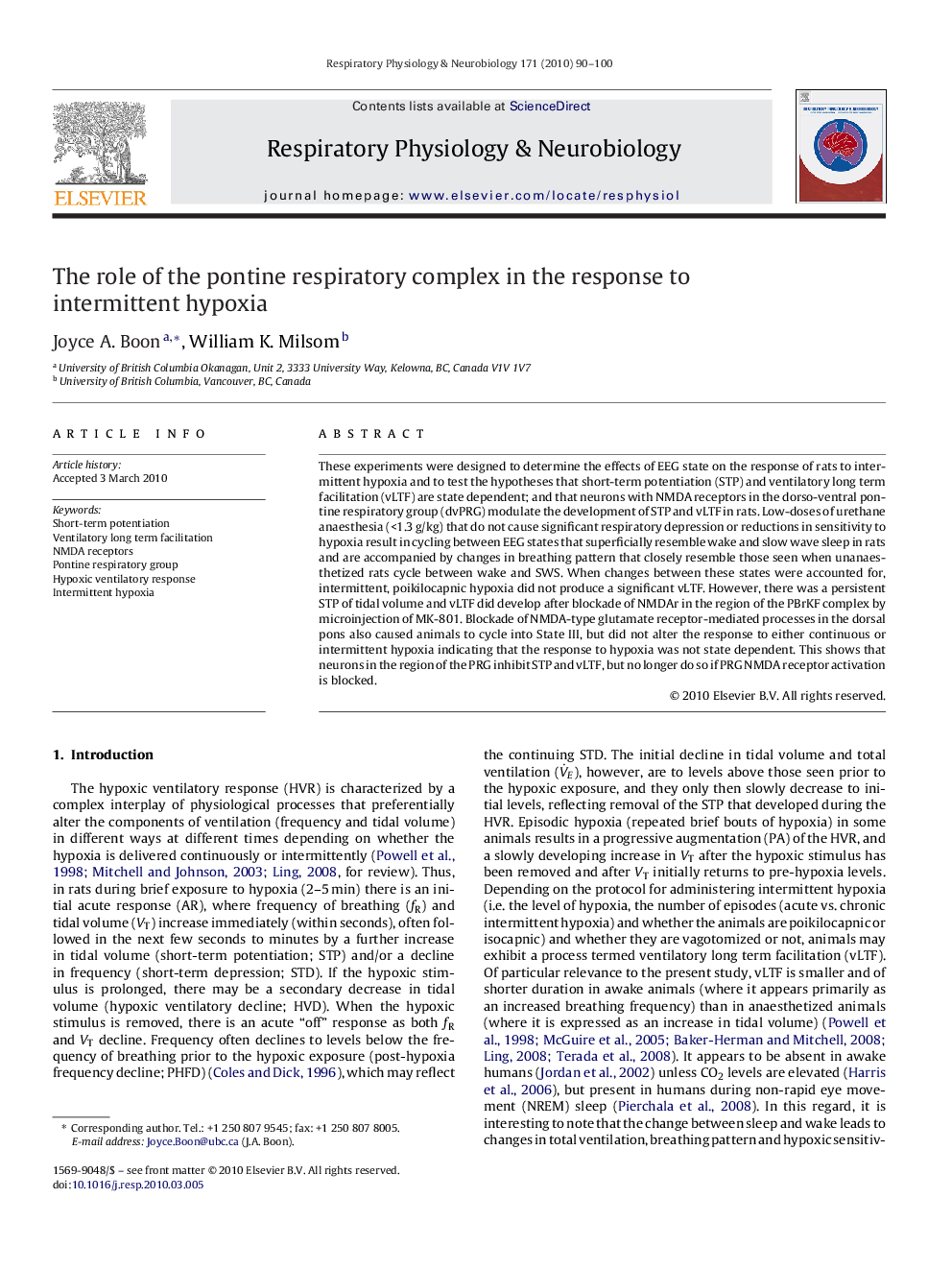| Article ID | Journal | Published Year | Pages | File Type |
|---|---|---|---|---|
| 5926599 | Respiratory Physiology & Neurobiology | 2010 | 11 Pages |
Abstract
These experiments were designed to determine the effects of EEG state on the response of rats to intermittent hypoxia and to test the hypotheses that short-term potentiation (STP) and ventilatory long term facilitation (vLTF) are state dependent; and that neurons with NMDA receptors in the dorso-ventral pontine respiratory group (dvPRG) modulate the development of STP and vLTF in rats. Low-doses of urethane anaesthesia (<1.3Â g/kg) that do not cause significant respiratory depression or reductions in sensitivity to hypoxia result in cycling between EEG states that superficially resemble wake and slow wave sleep in rats and are accompanied by changes in breathing pattern that closely resemble those seen when unanaesthetized rats cycle between wake and SWS. When changes between these states were accounted for, intermittent, poikilocapnic hypoxia did not produce a significant vLTF. However, there was a persistent STP of tidal volume and vLTF did develop after blockade of NMDAr in the region of the PBrKF complex by microinjection of MK-801. Blockade of NMDA-type glutamate receptor-mediated processes in the dorsal pons also caused animals to cycle into State III, but did not alter the response to either continuous or intermittent hypoxia indicating that the response to hypoxia was not state dependent. This shows that neurons in the region of the PRG inhibit STP and vLTF, but no longer do so if PRG NMDA receptor activation is blocked.
Keywords
Related Topics
Life Sciences
Biochemistry, Genetics and Molecular Biology
Physiology
Authors
Joyce A. Boon, William K. Milsom,
